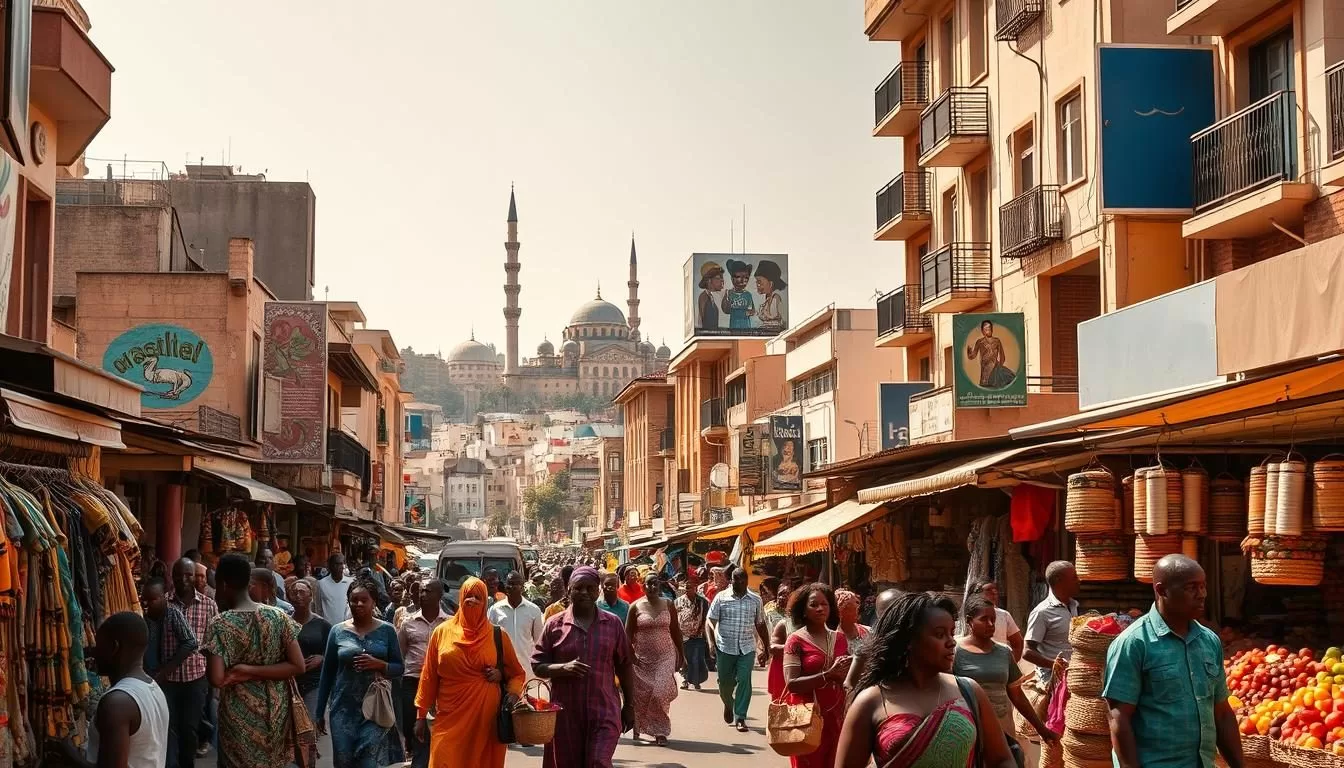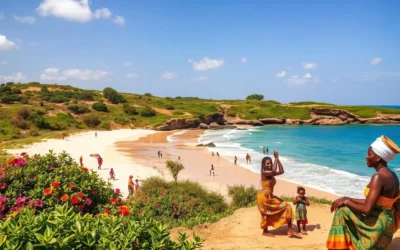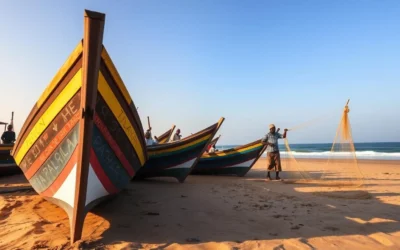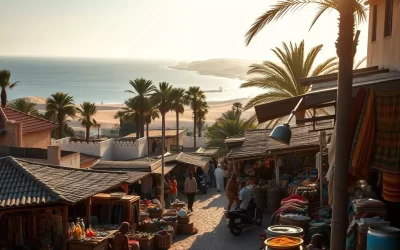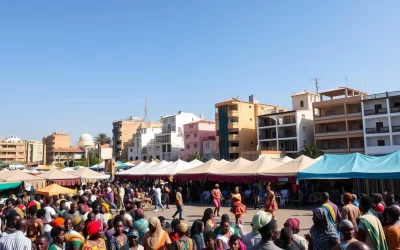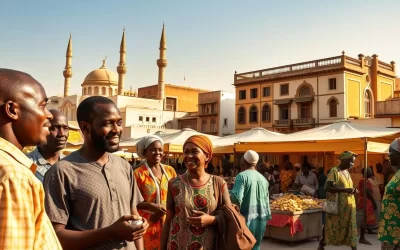✓ Accommodations ✓ Flights ✓ Rental Cars
Welcome to Dakar, a city where the Atlantic Ocean meets a vibrant tapestry of cultures and a rich history. As the capital of Senegal, Dakar is a unique destination that blends traditional African culture with modern urban life, creating a dynamic atmosphere for visitors.
You can immerse yourself in the city’s art scene, explore historical sites like Île de Gorée, or relax on the beautiful beaches. The city’s culture is a symphony of sounds, from bustling markets to the rhythm of Mbalax music echoing through the streets. With its friendly people, diverse neighborhoods, and mix of historical depth and contemporary excitement, Dakar is an appealing destination for various types of travelers.
Discovering Dakar: The Vibrant Capital of Senegal
With its unique blend of Atlantic and African flavors, Dakar is a city that will captivate your senses and leave you wanting more. As you explore this vibrant capital, you’ll discover a world where tradition meets modernity, and the rhythmic beats of African culture merge with the laid-back vibes of the Atlantic coast.
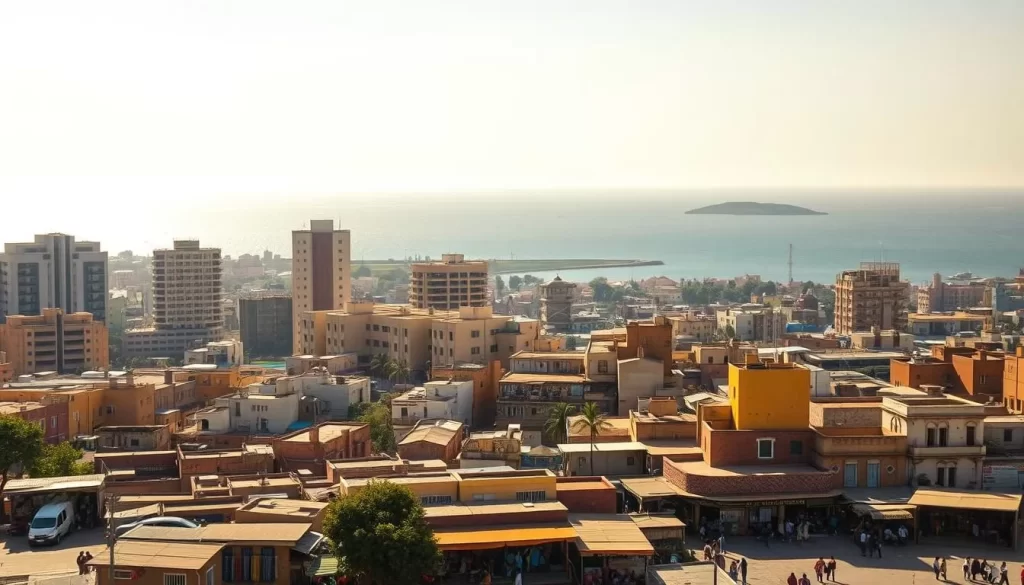
A City of Contrasts: Where Atlantic Meets Africa
Dakar’s unique geographical position on the Cap-Vert Peninsula, surrounded by the Atlantic Ocean, shapes the city‘s character and lifestyle. The city’s fascinating contrasts are evident in its architecture, markets, and daily life. From colonial buildings to modern structures, traditional markets to contemporary art galleries, and quiet beaches to bustling urban centers, Dakar is a city that will keep you engaged and curious.
| Aspect | Traditional | Modern |
|---|---|---|
| Architecture | Colonial buildings | Modern skyscrapers |
| Markets | Sandaga Market | Contemporary art galleries |
| Beaches | Quiet, secluded beaches | Bustling urban beaches |
Why Dakar Should Be on Your Travel Radar
As you visit Dakar, you’ll experience the city’s rich cultural heritage and enjoy spectacular views of the Atlantic Ocean. The city’s streets are filled with vibrant colors, sounds, and smells, making it a destination that will leave a lasting impression. With its unique blend of African traditions and contemporary global trends, Dakar is a cultural powerhouse in the region, making it an ideal destination for travelers seeking an authentic African experience.
A Brief History of Dakar: From Fishing Village to Cultural Hub
As you explore Dakar, you uncover layers of history that have shaped this city into the thriving metropolis it is today. Dakar’s narrative continues to evolve, with the city now standing as a symbol of Africa’s dynamism, creativity, and future potential.
Colonial Past and Gateway to Africa
Dakar’s evolution began from a small Lebou fishing village to its establishment as a major French colonial port. This transformation was significantly influenced by its role in the transatlantic trade. The trade history, although marked by the dark legacy of the slave trade, has shaped the culture and identity of Dakar. As the administrative center of French West Africa, Dakar became a gateway connecting the continent to Europe and the Americas.
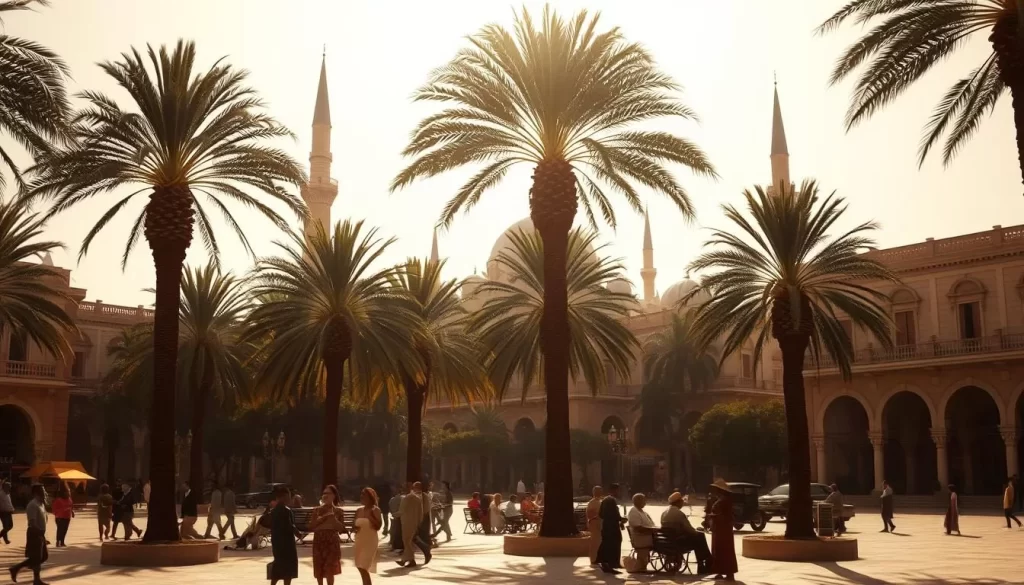
Independence and Modern Development
Senegal’s independence in 1960 was a pivotal moment, with Léopold Sédar Senghor, a renowned poet and statesman, influencing Dakar’s development as a culture center. Today, Dakar is home to important cultural institutions and events that celebrate African heritage and contemporary art. The city’s growth into a modern African metropolis has maintained connections to its traditional roots and colonial past.
Dakar, Senegal: Best Things to Do – Top Picks
Dakar, the vibrant capital of Senegal, is a city that seamlessly blends tradition with modernity, offering a plethora of exciting experiences for visitors. As you explore this dynamic city, you’ll encounter a mix of historical landmarks, cultural attractions, and modern entertainment options.
African Renaissance Monument

The African Renaissance Monument is an iconic landmark that symbolizes Africa’s strength and resurgence. This colossal bronze statue stands taller than the Statue of Liberty, offering breathtaking views of Dakar and the Atlantic Ocean from its base. Although its construction was controversial, the monument remains a significant cultural landmark. Visitors can stroll through the surrounding gardens for a peaceful break.
Île de Gorée (UNESCO World Heritage Site)

A short ferry ride from Dakar, Île de Gorée is a poignant reminder of the transatlantic slave trade. This island offers a glimpse into history with its preserved colonial architecture and the House of Slaves, featuring the somber “Door of No Return.” Visiting Gorée is a powerful experience that serves as a reminder of the city’s complex past.
Museum of Black Civilizations
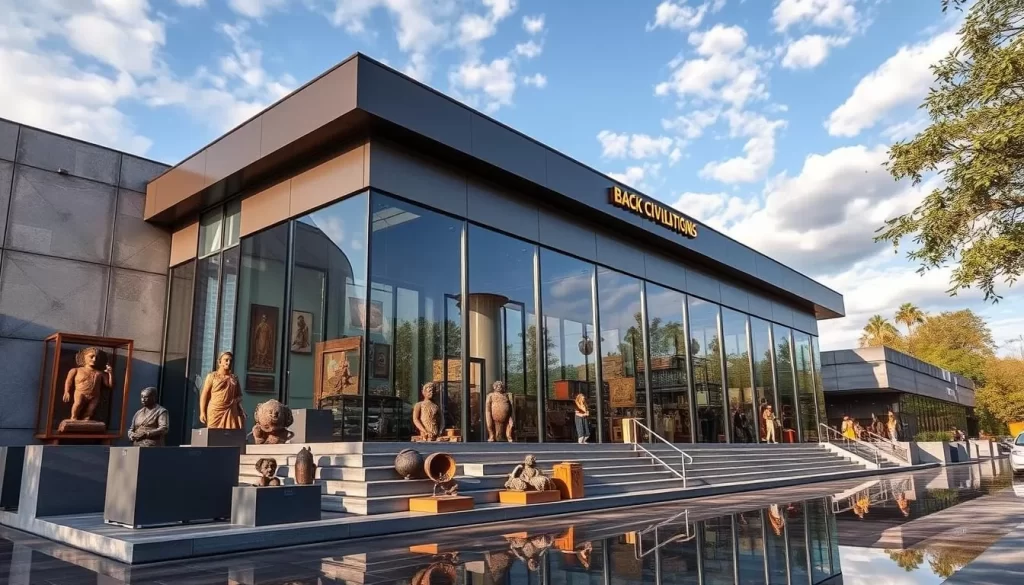
The Museum of Black Civilizations is one of the largest museums dedicated to African art and history in the world. It provides a comprehensive look at the history and culture of Africa, making it a must-visit attraction for anyone interested in understanding the continent’s rich heritage.
These three attractions offer visitors different perspectives on African history, from the painful past of slavery to the celebration of African civilizations and the continent’s aspirational future. You can plan your trip to include these key sites, with recommendations for the best times to visit and how to travel between them. Notable visitors like Barack Obama and Nelson Mandela have added to their significance as must-see destinations in Dakar, making your city break even more memorable.
Beaches and Water Activities in Dakar
From surfing to sunbathing, Dakar’s beaches offer a diverse range of activities for every kind of traveler. The city’s coastline is dotted with numerous beaches, each with its unique charm and attractions.
Surfing Paradise: Best Spots to Catch Waves
Dakar has long been a secret-surfer’s paradise, with a peninsula that catches swells from both the north and south. This makes it an ideal destination for surfers of all levels. With around 15 distinct locations within a 30-minute radius of each other, there’s a spot for everyone.
Beginners may prefer the more forgiving beach breaks of Virage and Yoff, while experienced surfers can challenge themselves on the rocky reefs of Ouakam and Vivier.
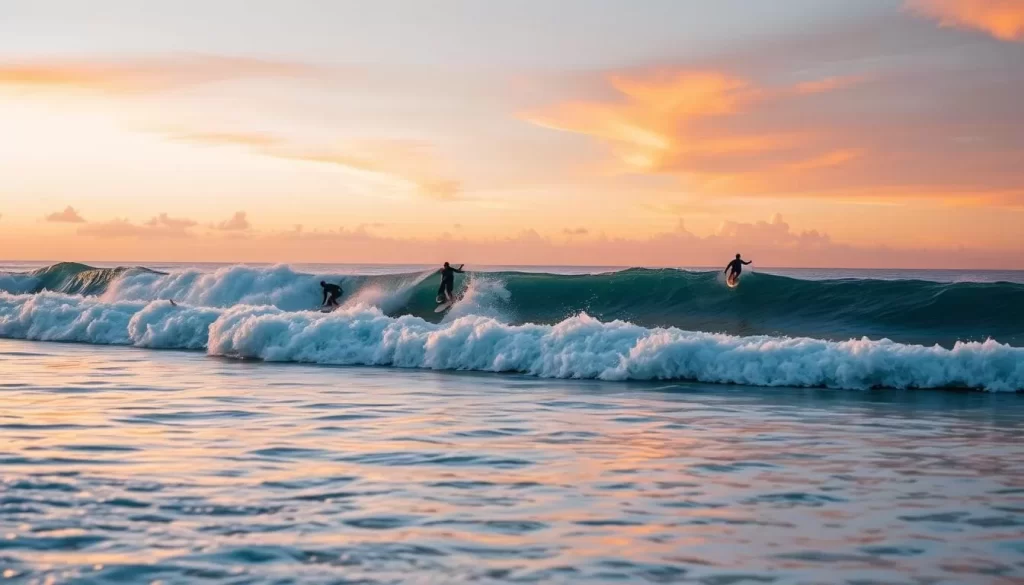
Ngor Island: A Beach Escape
Ngor Island is a tranquil beach escape just off the coast of Dakar. You can reach the island by taking a pirogue (fishing boat) from the mainland. Once there, you’ll be greeted by pristine beaches, crystal-clear waters, and a relaxed atmosphere.
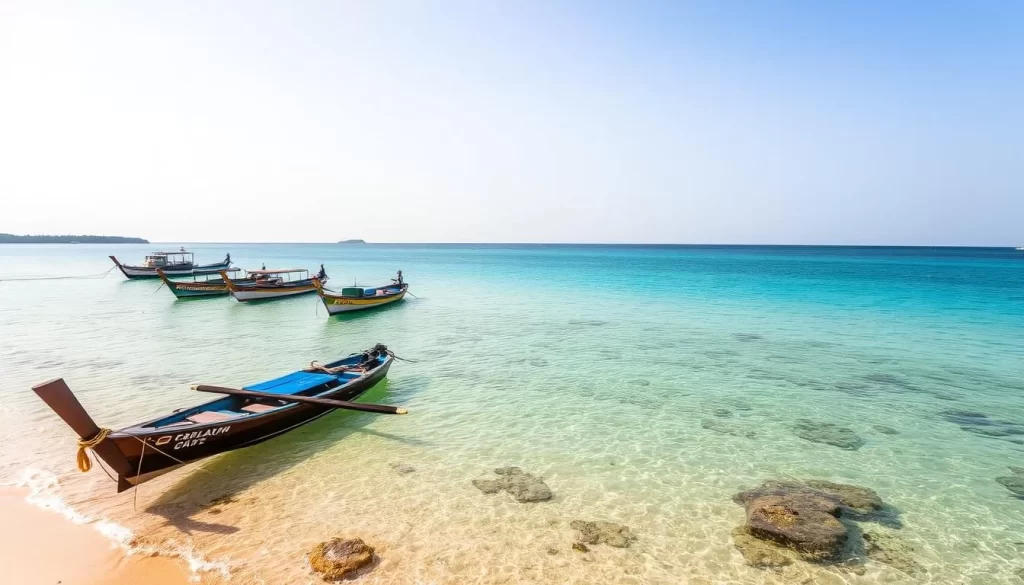
Plage des Mamelles and Other Scenic Beaches
Dakar is home to several scenic beaches, including Plage des Mamelles, known for its picturesque views and calm waters. Other notable beaches include Yoff Beach and Ouakam Beach, each offering a unique experience.
Visitors can enjoy a range of activities, from swimming and sunbathing to beach sports and fishing. Many beaches also have amenities such as food stalls and equipment rentals.
Whether you’re looking to catch some waves, relax on the beach, or enjoy water activities, Dakar’s beaches have something for everyone. With its consistent waves and beautiful coastlines, Dakar is an ideal destination for beach lovers and adventure seekers alike.
Cultural Immersion: Art and Music Scene
Dakar’s cultural landscape is a vibrant tapestry woven with threads of art, music, and creativity. As you explore the city, you’ll discover a rich cultural heritage that’s both traditional and contemporary.
Village des Arts: Meet Local Artists

The Village des Arts is a thriving creative community where over 50 Senegalese artists work and exhibit their creations. You can watch artists at work, engage with them directly, and purchase authentic pieces directly from the creators. This unique opportunity allows you to take home a piece of Dakar’s vibrant art scene.
IFAN Museum of African Arts
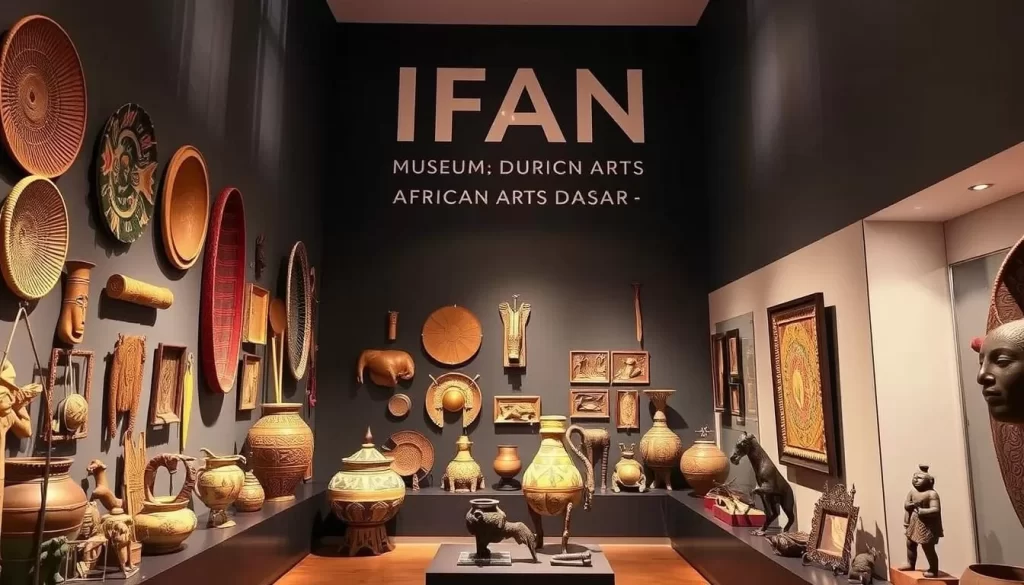
The IFAN Museum of African Arts is one of the oldest museums in West Africa, boasting a wide-ranging collection of traditional African art. The museum features artifacts like masks, sculptures, and musical instruments from across the continent, providing a fascinating glimpse into the region’s cultural heritage.
Dakar’s Vibrant Music and Nightlife
Dakar is renowned for its musical heritage, from traditional Sabar drumming to modern Mbalax, hip-hop, and jazz fusion scenes. You can experience live performances by local and international artists at venues like Just4 U and Club Thiossane. The city’s biennial art festival, Dak’Art, is one of Africa’s premier contemporary art events, drawing artists and art lovers from around the world.
To fully immerse yourself in Dakar’s art and music scene, consider visiting galleries during the day and enjoying live music at night. This will give you a complete cultural experience, showcasing the city’s rich heritage and creative energy.
Markets and Shopping Experiences
Stepping into Dakar’s markets is like stepping into a kaleidoscope of colors, sounds, and sensations. The city’s markets are not just places for commerce; they are vibrant hubs of culture and social interaction, reflecting the heart and soul of Dakar.
Marché Kermel: Colonial-Era Market
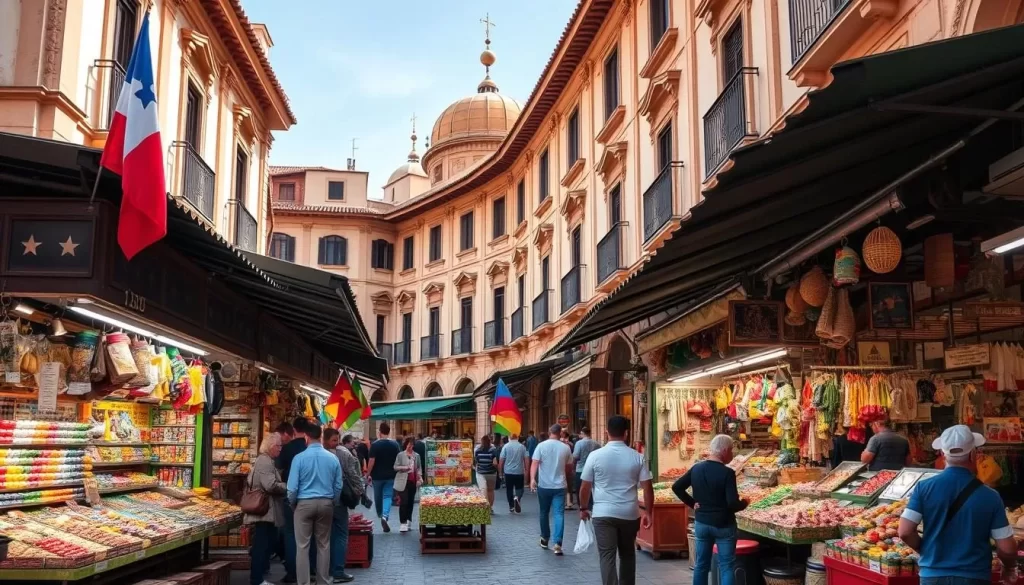
Marché Kermel is a historic market housed in a charming colonial-era building, offering a blend of traditional and modern goods. Visitors can expect to find fresh produce, seafood, and handcrafted items, making it an ideal spot for bargaining and interacting with local vendors.
Sandaga Market: Bargain Hunter’s Paradise
Sandaga Market is one of Dakar’s largest and most chaotic markets, offering a wide range of products from fresh produce to clothing and crafts. Navigating this market requires a sense of adventure and bargaining skills, but it’s an unforgettable experience.
Soumbédioune Craft Market: Authentic Souvenirs

Soumbédioune Craft Market is renowned for its authentic Senegalese crafts and souvenirs, including woodcarvings, textiles, and jewelry. It’s the perfect place to find unique gifts or mementos of your trip to Dakar.
In Dakar, markets play a significant role in daily life, serving as both social hubs and commercial centers. Visitors can find everything from traditional fabrics and musical instruments to art pieces and local spices, making for excellent souvenirs. Understanding the cultural significance of these markets and knowing how to navigate them can greatly enhance your shopping experience.
Culinary Journey Through Dakar
In Dakar, the capital city of Senegal, food is not just a meal, it’s an experience that connects you to the local culture. As you wander through the city‘s vibrant streets, you’ll discover a rich culinary landscape that reflects Senegal’s history and diversity.
Must-Try Senegalese Dishes
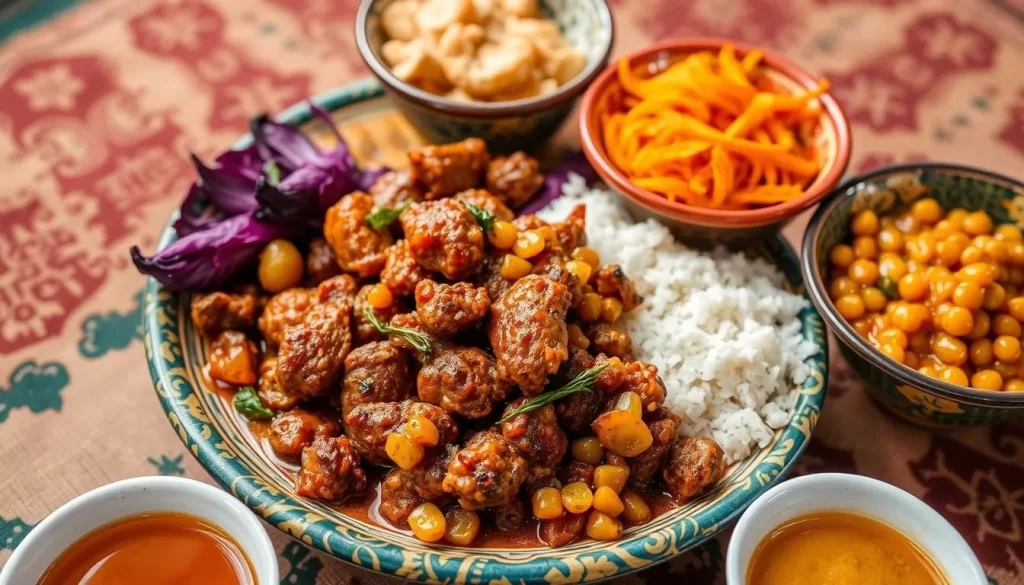
Senegalese cuisine is a flavorful blend of local ingredients and international influences. Be sure to try thieboudienne, the national dish made with fish and rice, which is a staple in Dakar. Other must-try dishes include yassa (marinated chicken or fish), mafé (peanut stew), and dibi (grilled meat). These dishes not only tantalize your taste buds but also give you a glimpse into the local culture.
Best Restaurants and Street Food Spots
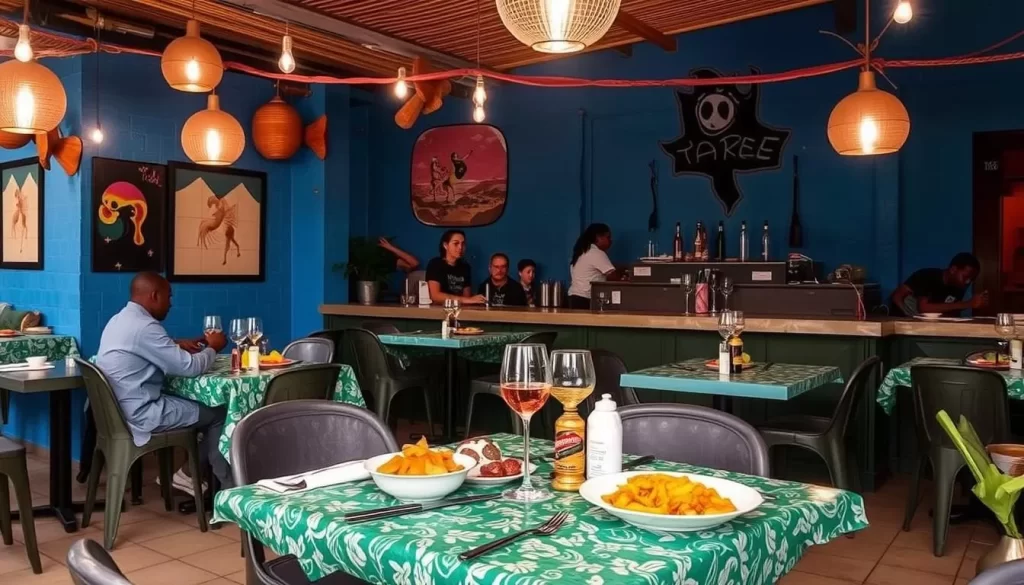
For an authentic dining experience, head to local eateries and street food vendors. You can find the best thieboudienne at restaurants like Le Perroquet or La Maison des Saveurs. For a unique trip experience, consider a cooking class or a market tour with a local chef, which can make you feel at home among the locals. Don’t miss trying some of the fresh seafood at one of the many spots along the coast.
Day Trips from Dakar
You can explore the diverse landscapes and attractions near Dakar on a range of day trips.
Lac Rose (Pink Lake): A Natural Wonder
Lac Rose, or Pink Lake, is a stunning natural wonder located just 29 kilometers northeast of Dakar. The lake’s water turns pink due to its high salt content, creating a breathtaking spectacle. Visitors can experience the unique sensation of floating in the lake’s dense waters, similar to the Dead Sea.
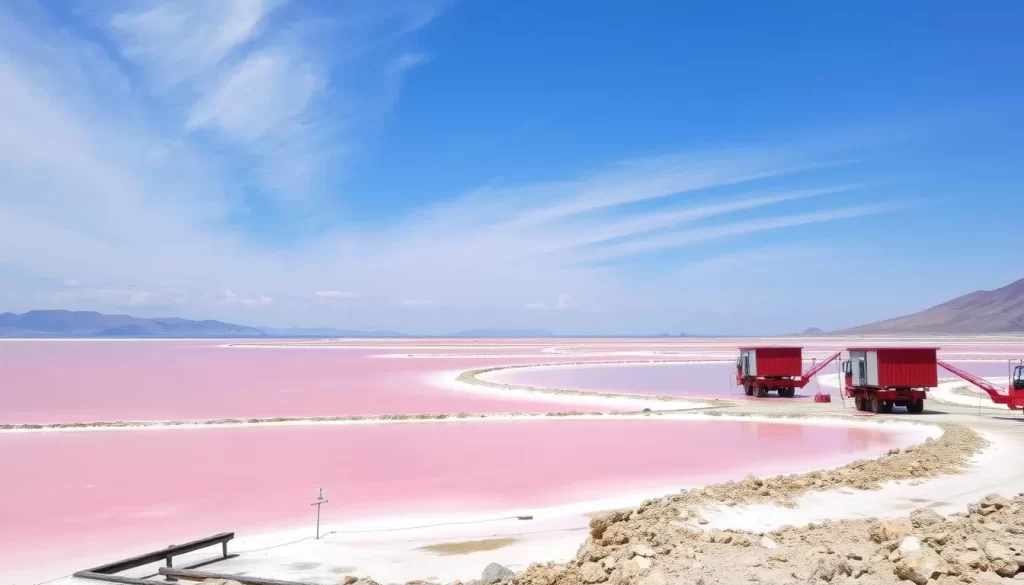
Petite Côte: Beach Towns and Fishing Villages
The Petite Côte region is a charming stretch of coastline featuring picturesque beach towns and fishing villages like Popenguine, Somone, Saly, and Toubab Dialao. Each destination offers a unique experience, from oyster hunting in Somone’s lagoon to the resort atmosphere of Saly. Visitors can enjoy the beautiful beaches, local cuisine, and relaxed atmosphere.
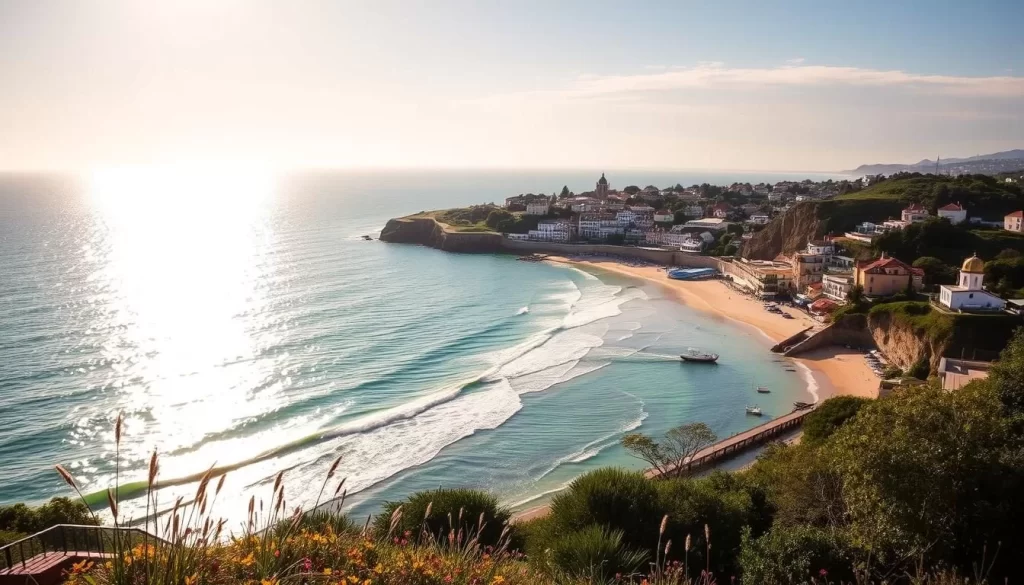
Bandia Nature Reserve: Wildlife Safari
For a wildlife adventure, head to the Bandia Nature Reserve, a short drive from Dakar. The reserve is home to a variety of African wildlife, including giraffes, zebras, and rhinos. Visitors can enjoy a safari experience, observing these animals in their natural habitat.
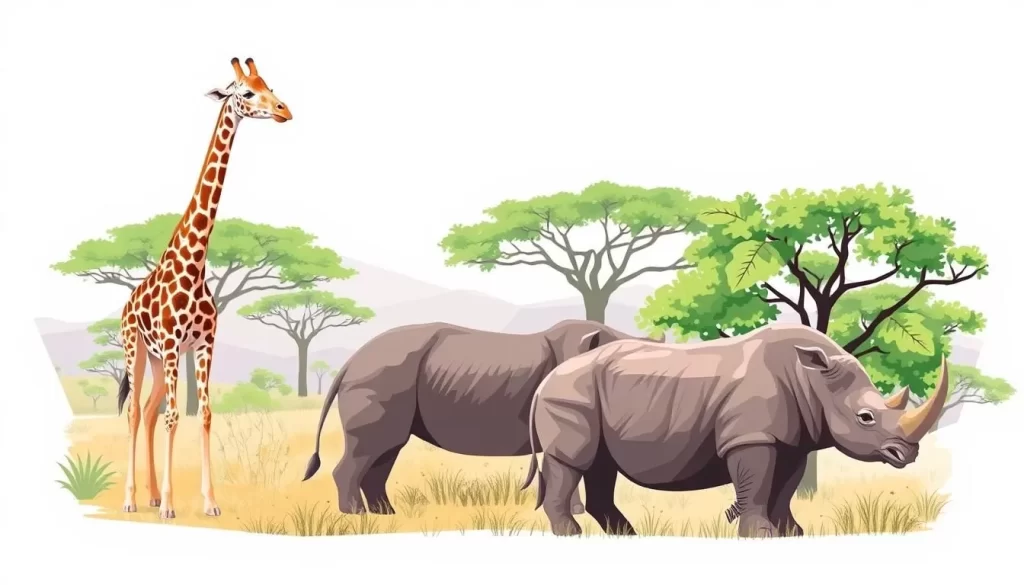
These day trips offer a great way to experience the diversity of Senegal’s landscapes, culture, and wildlife. Whether you’re interested in natural wonders, beach relaxation, or wildlife adventures, there’s something for everyone.
Practical Tips for Visiting Dakar
As you prepare to explore Dakar, knowing a few insider tips on transportation, accommodation, and cultural etiquette can make all the difference in your travel experience. The best time to visit Dakar is during the dry season, from November to June, when the weather is pleasant and cultural festivals are in full swing.
To navigate the city, you can use taxis, rent a car, or utilize public transportation options. For beach lovers, Ngor Island and Plage des Mamelles are must-visit spots. Don’t miss the African Renaissance Monument and the historic Île de Gorée. Be sure to respect local customs, especially when visiting religious sites like the Dakar Cathedral.
For views of the city, head to Les Mamelles Lighthouse. With these practical tips, you’re ready to immerse yourself in Dakar’s vibrant culture and enjoy your trip.
The above is subject to change.
Check back often to TRAVEL.COM for the latest travel tips and deals.
